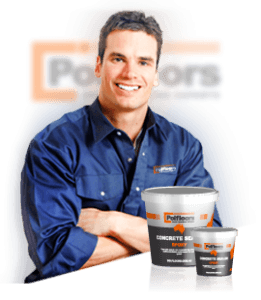POLYURETHANE or EPOXY Coat
A DIY guide on How to apply an epoxy garage flooring
This post is a part of A DIY guide on How to apply an epoxy garage flooring
If you have decided on using epoxy for your top coat, apply and mix it just like you would your color coat. If you have planned on adding a non-slip additive, add it to the mix at this stage. Because the epoxy is transparent, you may have to lean down to check your work and make sure you did not miss any spots. This is necessary in order to get the surface back rolled properly.
If you chose polyurethane for your top coat instead of epoxy, the adding and mixing of non-slip additive is the same, but the process of application is slightly different.
Epoxy is poured onto the floor but polyurethane is designed to be rolled onto the surface out of a paint tray. You don’t have to worry about rushing it, because unlike epoxy, it has a longer pot life. Depending on temperature, its pot life is 2 to 4 hours.
Note: Keep in mind that the rate of coverage for the first top coat of polyurethane or epoxy will be less on a full color flake floor. This is due to the coating filling in the voids between layers of paint chips.
Once done mixing, the polyurethane is poured in a paint tray and one person can start cutting along the walls with the chips brush while a second person rolls the floor out of the paint tray. In case you are applying the floor on your own, do not cut in before 10 minutes or so before rolling. You want to keep a wet edge at all times.
Double check for any missed areas while applying the coat. It is easier to see the clear coating in the light. Back roll the polyurethane after you have done a small section, just like you would do with epoxy. Continue cutting in and rolling until the whole floor is done.
One coat on a full color flake coat is not enough, because polyurethane has 2 to 3 mil dry film thickness. The coat will be very thin and rough due to the texture from the color flakes layer. To produce the desired protection, two layers are the minimum recommended coats. Three coats are better.
Do not apply polyurethane too thick. It can develop roller marks, look cloudy and cause orange peel effect. A 1/4” nap roller is recommended to avoid this from happening rather than a 3/8” nap roller.
Note: Pay attention to the technical information when applying polyurethane. Some best products are solvent based and may have a high VOC content. Use a respirator while applying and make sure that any open flames are extinguished.

